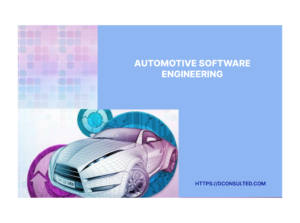
Empowering Your People Isn’t Enough | DConsulted
Learn why empowering employees alone doesn’t guarantee success. Discover how strategic alignment and leadership support drive real results.


In the 1980s and 1990s, the issue of separating requirements and implementation gained significant attention due to the increasing complexity of software systems and the need for improved project management. These decades also marked the advancement of requirements engineering as a distinct discipline within the field of engineering.
As software development evolved, a growing awareness of the need for systematic approaches to managing complexity also developed, which included clearly defining requirements separate from implementation. This called for specifically delineating what a software system should do and how it should achieve those functionalities.
Requirements are the documented functions a system must fulfill to meet the objectives and expectations of end-users and other stakeholders. They define what the system should do, encompassing functional requirements (specific behaviors) and non-functional requirements (usability, security, performance).
Implementation, on the other hand, refers to the system’s construction, coding, configuration, and deployment based on the requirements. It involves activities such as choosing technologies, writing code, and integrating components.
There’s a problem with the current approach to requirements engineering in many organizations, where everything—both the what and the how of the software—is specified in a single document called the Requirement Specification. This often causes confusion among product designers and stakeholders. Overriding all the other issues this merging can cause, specifying implementation details as requirements can limit design and development options and may not account for future advancements or changes in technology.
In this article, I will explain why some companies combine requirements with implementation, the issues this blending causes, and the benefits of keeping these two practices apart. I will also identify common gray areas where this distinction can become blurred and offer strategies for maintaining an effective separation.
In software development, organizations often face issues that influence their merging requirements with implementation. These challenges often arise from a lack of knowledge, time constraints, resource limitations, or rigid cultural practices. Understanding these causes is important for addressing the risks and initiating changes.
Lack of Knowledge: Stakeholders may not understand fully the importance of distinguishing between requirements and implementation. Teams may lack proper training in differentiating the two, resulting in poor habits in planning and documentation. This can confuse the development process and result in incomplete or vague requirements, making it hard to verify if the final product meets the original goals.
Time Constraints: High-pressure projects with tight deadlines can lead to shortcuts in documentation to speed up development. This often results in a combined document that addresses both needs and capabilities, leading to incomplete or unclear requirements and necessitating rework later in the project. The initial time saved through shortcuts can ultimately increase costs and cause delays when revisiting and clarifying requirements during the implementation phase.
Resource Limitations: Smaller organizations often face resource constraints, making it challenging to delineate roles for requirement specification and implementation planning. This can lead to a shortage of specialized expertise in both requirements engineering and implementation. Moreover, limited resources typically mean less time for thorough reviews, increasing the odds of oversights and errors.
Misalignment of Roles: When roles and responsibilities are not clearly defined, the boundaries between requirement specification and implementation planning can become muddied. This lack of clarity can create confusion among team members about their responsibilities and the scope of their work.
Cultural Factors: Legacy practices might be the rule even when they’re not the best way to do things, but simply because “that’s how it’s always been done.” Resistance to change and a lack of emphasis on process improvement can perpetuate outdated cultural practices, making it challenging to adopt more structured and effective methods. This fixed mindset can smother innovation and create inefficiencies and communication breakdowns.
Assumed Efficiencies: For highly complex systems, the solution can be so integrated that it might seem more efficient to specify requirements and implementation details together to ensure that every aspect is covered thoroughly. However, this integrated approach often leads to ambiguity and rigidity in the design and hinders adaptability, especially as the project evolves and new needs emerge. This approach can also lead to information overload and make it difficult to prioritize and manage the number of interrelated components effectively.
By understanding why software development teams have historically merged requirements and implementation, they can take specific measures to address their challenges. These actions could include investing in education and training, enhancing communication and collaboration, establishing clear documentation standards, and using requirements management tools that ensure traceability between requirements and implementation plans.
Managing complexity through the separation of requirements specification and implementation planning is the basis of modern software engineering. It allows for inventive design, better planning, effective communication, regular testing, and overall improved management of software development projects. Separating the practices is essential for a number of reasons.
Clear and focused requirements plainly state what end-users need without weighing them down in technical details. This makes it easier for non-technical stakeholders to understand and verify that their needs are being met. By focusing specifically on what the system needs to do, requirements documents are less likely to be misinterpreted, reducing the risk of costly rework and ultimately leading to higher-quality outcomes.
Flexibility in design and development allows the architecture to be more adaptable to changing technologies and methodologies. This can be crucial for future-proofing the system. Separating the two streams gives developers the freedom to explore various implementation options to meet the requirements. This can lead to more innovative and efficient end-user solutions.
Better project management enables better task delegation among teams, as the implementation can be handled independently from the requirements gathering. Separating the what and the how allows for better tracking of progress against requirements, with the focus remaining on whether the system meets the specified needs.
Regulatory requirements are met without prescribing the implementation, allowing for compliance without hindering progress. This empowers companies to devise innovative solutions while adhering to regulatory standards. It clears the path for the creation of novel approaches that not only meet legal obligations but also create opportunities for innovation.
Minimization of over-specification allows for greater focus on business needs. By not including implementation details in requirements, the risk of over-specifying the solution is minimized, allowing for more robust and flexible designs. Ensuring that requirements focus on business needs and objectives reduces the risk of the project deviating from its intended goals.
Identifying and Navigating the Gray Areas
There are several areas of overlap in requirements engineering where the distinction between requirement specification and implementation detail can overlap. These gray areas often surface because certain aspects of a system’s functionality influence what the designed system must do and how it should be implemented. Here are examples of where the distinction between requirements and implementation can become unclear.
Performance requirements can have implications for implementation details, thus influencing design. These requirements specify how fast or efficiently a system must operate under certain conditions, such as response times, throughput, and resource utilization. To meet these criteria, specific technical choices often need to be made, such as selecting efficient algorithms, optimizing code, or choosing particular hardware configurations. For example, a requirement for a web application to handle a certain number of concurrent users with minimal latency might influence the decision to use a particular type of server or database technology, making the requirement itself partly an implementation directive.
Security requirements with implementation decisions can shape technology selection. Security requirements dictate how a system must protect data and ensure secure interactions. These requirements might specify the need for encryption, authentication, and authorization mechanisms. For instance, a requirement for end-to-end encryption can necessitate the choice of specific encryption libraries and might influence the overall system architecture to ensure secure data transmission and storage.
User expectations for functionality and usability can impact both the requirements and the implementation. For example, a requirement for a user-friendly interface may include specifications for layout, navigation, and responsiveness. Achieving these usability goals often requires detailed design decisions about user interface components, interaction patterns, and front-end technologies.
Compliance requirements often entail specific practices and procedures to ensure that a system adheres to legal, regulatory, and industry standards. These requirements can necessitate specific practices such as data handling procedures and audit trails. For example, meeting ISO 26262 requirements often involves implementing safety mechanisms such as fail-safe designs, redundancy, and diagnostic features to ensure the safe operation of automotive systems.
In the examples above, the influence of requirements on implementation development and vice versa can create a natural overlap, making it challenging to maintain a clear distinction. There are several practical ways organizations can adopt strategies such as:
Higher-Level Abstraction: Initially define requirements more conceptually, specifying what the system needs to achieve without getting into the details of how those requirements will be implemented. By focusing on the desired outcomes or goals of the system rather than the specific methods or processes to achieve them, one can ensure that the requirements are clear, understandable, and not overly prescriptive.
Cross-Functional Collaboration: Encourage cooperation between requirements engineers, developers, and other stakeholders to guarantee a shared understanding without conflating the two practices. By working together, teams can better define the parameters, align their efforts, and streamline the entire development process.
Clear Documentation: Develop well-defined and detailed documentation standards that separate requirements from design and implementation features. Maintain separate documents for requirements and implementation guidelines, such as a Product Requirement Document (PRD) for requirements and a Technical Design Document (TDD) for implementation guidelines. This separation ensures that requirements focus on what needs to be achieved, while implementation concentrates on how to achieve it.
Iterative Development: Consider enabling continuous improvement and adaptation by dividing the project into small segments with each iteration a mini-project that includes planning, design, development, testing, and review. This approach allows the development team to refine the software system progressively, incorporating feedback, and making improvements in successive cycles.
Regular Reviews: Conduct regular reviews to ensure alignment between requirements and implementation. These reviews make possible early detection of discrepancies, allow for adjustments based on feedback, and ensure that the project remains on track to meet its goals. Reviews promote continuous improvement and help maintain clear communication among all stakeholders.
Even in situations where you have time constraints, limited resources, or both, by implementing these strategies, you can better navigate the gray areas and maintain a clear distinction between requirements and implementation, leading to more effective and adaptable software development processes.
As technology continues to advance and software systems become increasingly sophisticated, introducing innovative tools, platforms, and methodologies, the necessity for a clear separation between requirements and implementation will only become more critical. Visionary organizations understand that this separation is not just a best practice, but a fundamental principle driving their software development strategies and furthering their innovation, efficiency, and competitive advantage.
Other Articles

Learn why empowering employees alone doesn’t guarantee success. Discover how strategic alignment and leadership support drive real results.

Generative AI tools like ChatGPT are revolutionizing software engineering by converting UML diagrams into accurate, structured code. Learn more about it here.

AI-powered requirement review tools simplify engineering verification, ensuring accuracy, efficiency, and compliance with INCOSE guidelines. Learn more about it here.

Managing and optimizing thread overhead is important for safety-critical and embedded systems. Learn more about the C++ multithread common myths here.

Managing and optimizing thread overhead is important for safety-critical and embedded systems. Learn more about the C++ multithread common myths here.

Discover the critical role of effective interface management in complex systems. Learn how centralized tools, AI-powered solutions, and well-defined processes can prevent errors, enhance collaboration, and ensure safety in industries like automotive and aerospace.

The system requirements analysis process under ASPICE and ISO26262 frameworks shapes automotive system architecture design for enhanced safety, reliability, and compliance. Learn more about it here.

Compliance with ASPICE and ISO26262 standards provides a significant impact on automotive software development. Learn more about it here.

AI technologies like ChatGPT-4 are revolutionizing requirements engineering by improving accuracy, consistency, and efficiency. Learn about the role of AI in refining, validating, and managing project requirements here.

Model-Based Systems Engineering (MBSE) offers a robust framework to streamline the entire engineering process, from design to validation. Learn more about it here.

Data-Oriented Design (DOD) can revolutionize automotive software development by enhancing performance, reducing costs, and minimizing hardware requirements. Learn more about it here.

Explore the evolution of functional safety, its growing importance in industries like automotive, and the critical role of Fault Tolerant Time Interval (FTTI) in ensuring system reliability. Learn how FTTI, along with Malfunctioning Behavior Manifestation Time (MBMT) and Hazard Manifestation Time (HMT), contributes to robust safety designs, preventing hazards in safety-related systems such as ADAS and autonomous vehicles. Discover the impact of ISO 26262 standards on the development of effective fault detection and reaction mechanisms in automotive safety.

While ISO 26262 primarily addresses functional safety, SOTIF extends the scope to focus on potential hazards arising from system behaviour, even when the system functions as intended. Learn more about it here.

Discover the risks of reinterpret_cast in safety-critical software and explore safe alternatives like polymorphism and templates for robust, efficient code.

In a rapidly evolving technological landscape, the demand for systems that can not only withstand errors but also adapt to them is paramount. This article delves into the world of Fault-Tolerant (FT) systems, emphasizing their significance in maintaining the functionality and safety of critical operations across various sectors. It explores the latest advancements in FT technology, underscoring the importance of resilience and adaptability in ensuring uninterrupted service and safeguarding against potential failures.

In a rapidly evolving technological landscape, the demand for systems that can not only withstand errors but also adapt to them is paramount. This article delves into the world of Fault-Tolerant (FT) systems, emphasizing their significance in maintaining the functionality and safety of critical operations across various sectors. It explores the latest advancements in FT technology, underscoring the importance of resilience and adaptability in ensuring uninterrupted service and safeguarding against potential failures.

Discover the transformative impact of Software-Defined Networking (SDN) and Multicast Addressing on automotive embedded systems. Explore how these technologies enhance communication efficiency, safety, and performance in the automotive industry, leading to cost-effective, scalable, and eco-friendly solutions. Dive into the technical advantages and practical applications for modern vehicles and infrastructure.

Discover how ChatGPT revolutionizes engineering with AI, accelerating learning, enhancing safety, and boosting productivity.

Defect Escape Reduction Rate and feedback loop elevate testing. Learn more about them here.

ASPICE and ISO26262 frameworks improve system development in the automotive industry, ensuring safety, compliance, and high-quality standards.

Conducting software FMEA, FTA, and compliance with ISO 26262 helps developers create software that meets stringent safety requirements. Learn more about it here.

Explore the challenges of dynamic memory allocation in critical software, learn how to mitigate failures, and ensure the reliability of safety-critical systems. Real-life failures and practical solutions are discussed.

Strong types are a key concept in C++ programming for functional safety. Learn how strong types can reduce errors in critical systems with C++.

Unit testing is an essential part of the software development process. Learn more about it here.
